Sending a follow-up email is a quick way to pick up the conversation from where you left off and get a response. However, writing a follow-up email is distinct from writing an initial cold email.
The former lays the ground for introduction, a valuable sales pitch, and strong customer relations. The latter aims at re-engagement with non-responsive leads.
A follow-up email can sometimes be more efficient than the initial one. With no follow-up, the response rate is around 16%, while with follow-up, it can be up to 27%.
Prospects might not respond to an email due to busy schedules or content being too salesy. This guide will help you learn how to send an effective follow-up email, resulting in faster responses and more deals closed.
Why Is It Important To Send A Follow-Up Email After No Response?
Following up increases response chances. Even one follow-up can boost reply rates. It’s easy to get frustrated when there’s no reply, but there might be genuine reasons for the delay. Before assuming anything negative, send at least one follow-up email.
The most challenging aspect of writing a follow-up email is being polite and professional. This can be further tricky if you are in a position of authority, like a boss, manager, director, or important client.
The tip is to use a formal email structure and an acceptable follow-up email format.
About 80% of deals require five closing touches before a wrap. Sending a single follow-up message can help you stand apart from your competitors. The additional follow-ups push prospects to notice and respond to you.
If you write your follow-up emails well, your prospects will feel they stand out in your long email list. This will make them more interested in what you’re saying and willing to invest in it.
Writing The First Follow-Up Email After No Response
- Take Some Time; Don’t Be Too Quick
Salespeople often think they’re being persistent. However, following up too often can come across as annoying.
Do not keep contacting a potential customer without understanding why they haven’t responded. If you reach out again just a day or two after your first email, you’re not giving them enough time to reply.
It can give the impression that you have little work to do. Less people want to engage with someone like that. Instead, wait at least three days before sending a follow-up. After that, you can increase how often you reach out.
- Start With A Personalized Greeting
When you’re sending a follow-up email to a potential customer, start with a personal greeting. This makes your email feel friendly and approachable.
If you want to be a bit more formal, you can say “Dear [name]” or “Hi [name]”. Include their name to ensure you catch their attention.
Tip: Use tools like GrowMeOrganic to personalize your emails. You can customize subject lines, opening lines, and more.
- Do Not Re-Send Your First Mail
Don’t copy and resend your old emails. While it might feel easier to do so, it usually makes your prospect feel bad for not replying. As a result, your email could end up in the spam folder.
Instead, start each follow-up email fresh. Try using different subject lines, greetings, and calls to action. You never know what will get a response, so experiment instead of a one-long and monotonous email thread.
- Use A Truthful Subject Line With Your Last Touchpoint
Email subject lines like “Our meeting last week” or “Following up on our phone call” are less appreciated. Most of the time, these events never happened.
Don’t confuse your prospect into opening and responding to your emails. Make your subject lines positive, clear, and straight to the point.
Here are some good examples:
- “Resources list for [business name]”: This makes the prospect curious about the resources you’re offering.
- “Following up after the demo last week”: Use this if you’ve already done a demo with the prospect.
Similarly, you must also mention that you have reached out to them before. Don’t need to say something like, “This is a follow-up to an email I sent you last week.” These sentences can feel like blaming.
Use simple, friendly reminders showing you’re here to help and offer more value. Start your email by quickly getting to the point and reminding them about the action you wanted them to take.
- Do Not Be Passive-Aggressive
When you’ve sent several emails without getting a response, it’s natural to feel disappointed. But avoid taking it personally. Phrases like, “I know you’re busy, I’m busy too,” or “I’ve tried to reach you a few times” are unhelpful.
Such comments might induce guilt and obtain a reply, but they also risk offending the recipient and diminishing their interest.
Always assume the best. Use phrases like, “Wanted to check in on this,” or “Just wanted to bring this email to the top of your inbox,” for a gentle reminder. This shows you understand they’re busy.
- Offer New Information Or Re-Share Crucial Details
Be clear about your intention and explain why you wish to reconnect. Here are some examples:
- “I’m checking to see if you had a chance to look at the proposal I sent over?”
- “Any updates on my job application? I’m really interested in the role.”
- “Just making sure our meeting for next Tuesday at 2 PM is still confirmed?”
Being upfront about why you’re reaching out makes it easier for the other person to respond. Always state your purpose clearly and directly.
- Include A CTA
Your emails must always end with clear instructions. Let the person know what you want them to do after reading your message. Do you need them to answer a question or provide more details about their company? Or connect you with the right person for a deal?
Switching up your call-to-action (CTA) in follow-up emails is crucial. Your prospect might have seen the first email but didn’t act on it. By changing your request, you increase the chances of getting a response.
- Remember To Appreciate The Recipient
No matter why you’re reaching out again, always thank the people you’re engaging with. A simple “Thank you for your time” or “I appreciate you taking the time to talk about this” can keep things positive.
End your follow-up emails appreciating the recipient in the following ways –
- Thanks for your time, and I’m excited to engage more.
- Thanks again for thinking about this. If you need anything else, just let me know.
- Have a great week! I’m eager to hear what you think.
- Ensure Proper Professional Email Signature
Having a professional email signature in a follow-up adds credibility to your message. It distinguishes you from potential spammers or scammers.
Including your contact information in the signature makes it convenient for recipients to reach out. Your email signature serves as a branding tool, reinforcing your brand identity through logos and colors. It reflects professionalism and attention to detail, leaving a positive impression.
- Proofread Before Sending
Before sending your email, read through it carefully. This helps catch mistakes like typos, grammar errors, or weird sentences. Read it out loud, as this can make errors more obvious.
Once you’re satisfied with the content, double-check the recipient’s name, subject line, and email address. Spending just 5 extra minutes to proofread can make a big difference in how your message is received.
Writing The Second Follow-Up Email After No Response
Timing is important when sending the second follow-up email. Wait three days before reaching out again, and always write a new message. Include a clear CTA so the person knows what you want them to do next.
Here are important tips you need while following up a second time:
Adjusting The Close With Each Follow-Up
If you aren’t getting a response, an incorrect call-to-action can be the reason. Each time you follow up and don’t get a reply, your request should become simpler.
For example, if your first follow-up email asked for a meeting, your second email could ask for a referral instead. If you still don’t get a reply, your third email should ask for some basic information.
No Breakup Emails
Sending a breakup email can be discouraging. If you’ve followed all the steps and still haven’t heard back, stop emailing your prospect. Take a break for a few months and then reach out again.
With multiple follow-ups, you can make the prospect feel guilty. It reduces future response chances. By staying silent and emailing them later, you maintain your authority. Remember to be friendly.
Effective Follow-Up Email Examples
If you need more clarity, here are follow-up email samples that can be used in different situations –
Follow-Up After Demo
More work is needed post the demo to close a deal. Expecting the prospects to respond on their own is not recommended. Regular follow-ups are needed to ensure the deal is closed in your favor.
A prospect can be in discussion with other competitors and might forget to respond immediately. In the absence of a follow-up, your competitor gets an edge. Hence, a follow-up email within 2-5 days of the demo helps you stay on top.
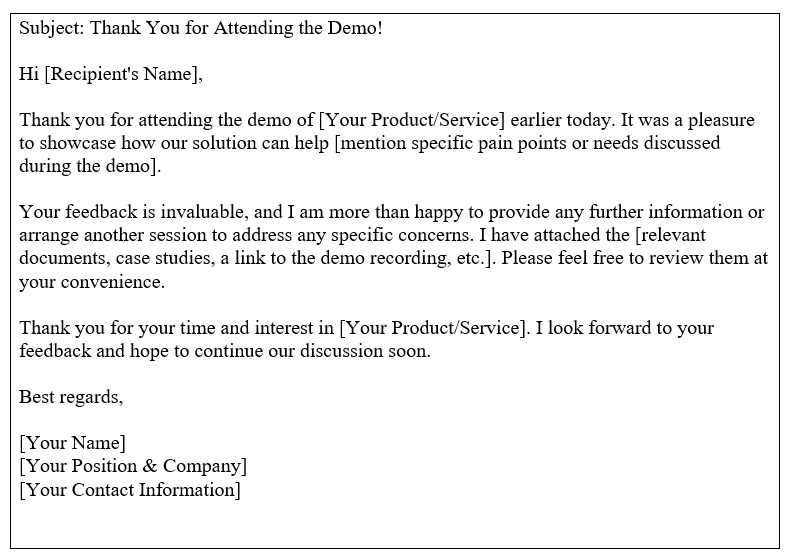
Follow-Up After A Missed Call
It often happens that salespeople call a prospect and email but fail to get a reply on either. Wait for about a week in this scenario. Calling too much can annoy them.
A follow-up email can re-establish the connection and help attain growth opportunities.
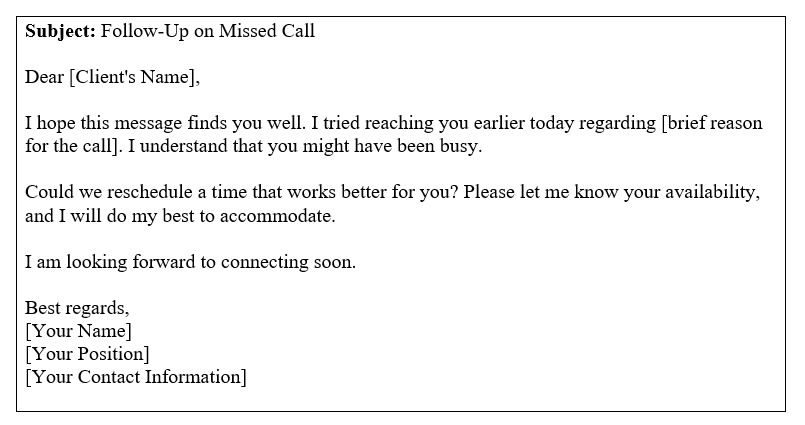
Follow-Up For A Meeting Reminder
It is common to miss meetings due to busy schedules or being occupied with too many tasks. A meeting reminder via email is a healthy practice to prevent it.
Share meeting addresses or links on the reminder email to help them easily find the details. Setting automated reminders using a scheduling tool makes it more organized.
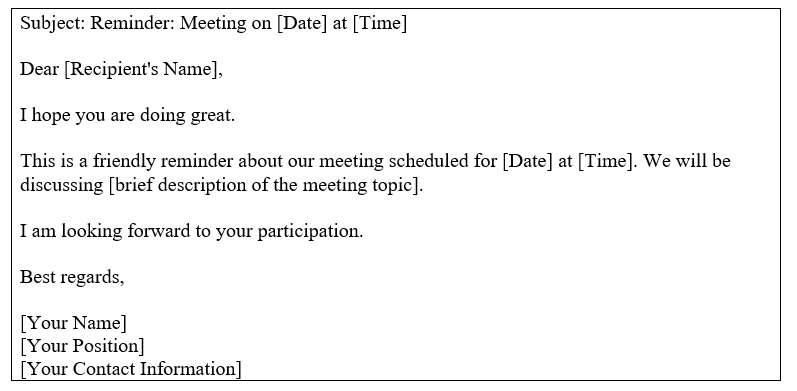
Follow-Up After A Sales Inquiry
A sales website receives several queries in a day. Selling advanced products and services requires more interactions with potential customers. Proper research is needed after the initial sales query to add something valuable and convincing.
It is wise to send more than one follow-up email during a sales process. Remember to keep the prospects engaged by constantly updating them with crucial information.

Follow-Up After Sending A Contract
Small businesses and freelancers need to send contracts at the beginning of sales cycles. For enterprises, sending a contract means the deal is closed. It is usually sent when the recipient needs to sign it.
If you have sent the contract but have not received a response, re-check with a follow-up. Sending a contract means one has established a connection. Send a follow-up email to motivate the recipient and take the final step.
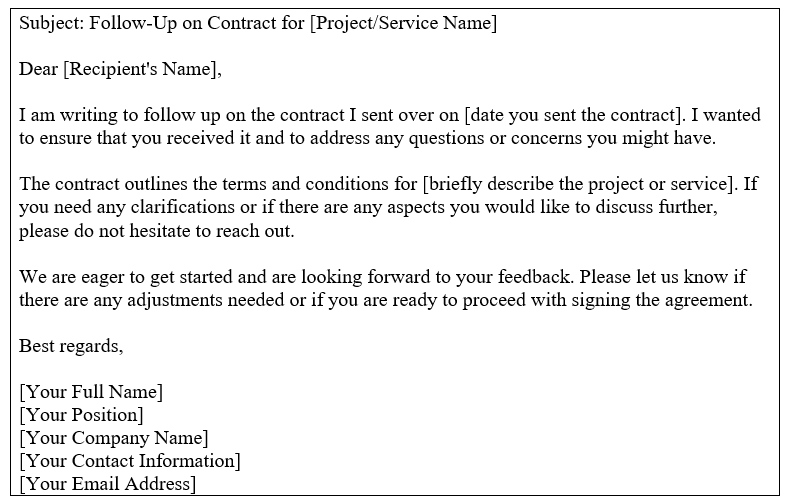
Follow-Up Post Social Media Connection
Connecting on social media is an integral part of networking today. If you have sent an email post about your connection on social media and have not received a response, a follow-up can help.
Try adding more value in the follow-up and include proper CTA.
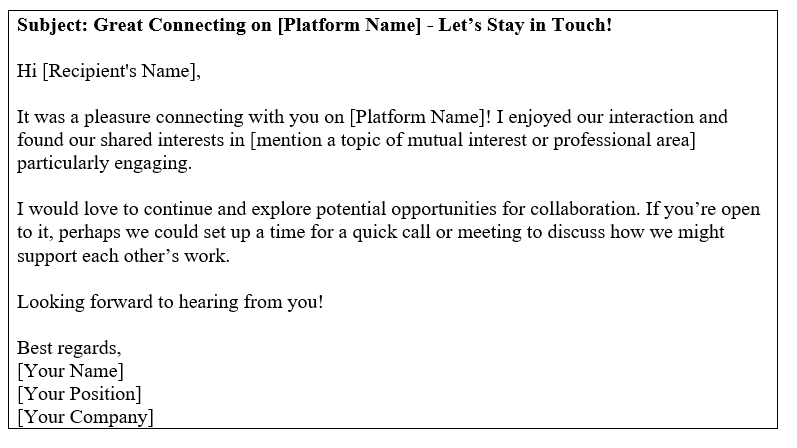
Follow-Up For Renewing Sales Contract
Prospects can be unavailable when it’s time for contract renewals. Your automated renewal reminders and emails can easily get ignored. Sending follow-up emails is a necessity for subscription-based businesses.
Internal issues or budgets are common reasons for a client’s lack of interest in renewal. Pitching alternative options or more affordable packages in the follow-ups can work in your favor.
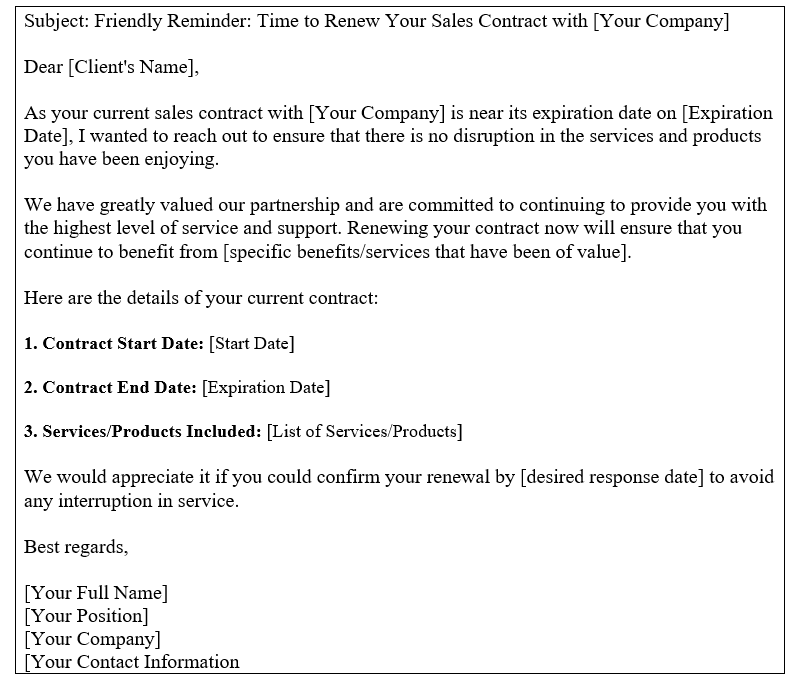
Follow-Up Post A Free Trial
A free trial is an ideal way to showcase a product and gain a prospect’s attention. If the trial is about to end and the client is not responding to your subscription emails, send a follow-up email.
No response doesn’t always mean no. Saying yes to a free trial means the client is interested in your offerings. However, more time can sometimes be needed to make a decision. In the follow-up, suggest a meeting or call to discuss the situation and provide a solution.

Follow-Up Post Sending Product Samples
Sending product samples is common in the printing and manufacturing industries. They are mandatory before a prospect calls for a quotation or a purchase. A follow-up always increases your conversion chances in these cases.
A no response sometimes means the offerings didn’t fit the requirement. Sending more samples is a good option here. Include comparison charts with competitor products in the email to stand out.

Do’s and Don’t When Writing A Follow-Up Email
| Do’s | Don’ts |
| Little personalization can result in a positive response. | Missing personal touches. |
| Add practical and valuable information. | Leaving out important details. |
| Even a quick proofreading can help avoid several mistakes. | Skipping proofreading. |
| A correct CTA motivates the recipient to respond. | A missing CTA. |
| Genuine gratitude can foster deep relationships with prospects. | Not showing gratitude. |
Best Practices For Sending A Follow-Up Email
- Do Not Be Too Pushy: When following up, balance contacting them soon after your initial email without overwhelming their inbox. Wait 3-5 business days for a first follow-up. Give about a week before a second attempt, as recipients are often busy. Avoid multiple follow-ups in a quick course to prevent appearing aggressive or desperate.
- Add Value With Each Follow-Up: Do not send the same email repeatedly. Ensure each follow-up email adds new value, like relevant articles, company updates, testimonials, or special offers. This approach encourages recipients to open and engage with your emails rather than ignoring repetitive messages.
- Be Direct and Concise: Keep your follow-up emails short, polite, and direct. Briefly remind them who you are your company and why you’re reaching out. Refer to previous communications and highlight key details or requests. Ask if they need more information or want to schedule a meeting.
- Remember to Personalize All Follow-Ups: When sending follow-up emails, avoid generic mass emails. Personalize each message with the prospect’s name, company, role, or other unique details. Mentioning specifics like their title or initiatives shows genuine interest. This makes it clear you want to connect with them personally, not just anyone in their role.
- Don’t Be Demanding: Do not use demanding phrases like “I need you to provide pricing immediately” or “Let’s get this scheduled at the earliest.” Give your prospects the freedom to engage on their own timeline with polite requests. This approach reduces defensiveness and increases response rates.
- Avoid Being Too Salesy: A follow-up email should aim to keep the conversation going, not increase sales pressure. Do not be too promotional about your product or service. Instead of intending to pitch or close the deal, offer value and address the prospect’s needs.
Wrap Up
Sending follow-up emails to potential clients can significantly boost your chances of getting their attention and closing deals. By crafting polite, thoughtful, and focused emails, you can increase the likelihood of getting responses.
Follow-up emails are crucial for acquiring and retaining customers. By following the best practices and steps mentioned above, you can expect faster responses from prospects.
Utilize GrowMeOrganic’s email campaigns for personalized and engaging automated emails. These emails are tailored to user behavior, assigning points to interested leads, integrating with various email accounts, and tracking open rates for in-depth analysis and scheduling.
Trust GrowMeOrganic for effective follow-ups and improved lead conversion.
About Post Author
Anant Gupta
Growth Hacker, Marketing Automation Enthusiast & Founder of GrowMeOrganic

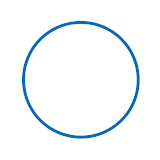














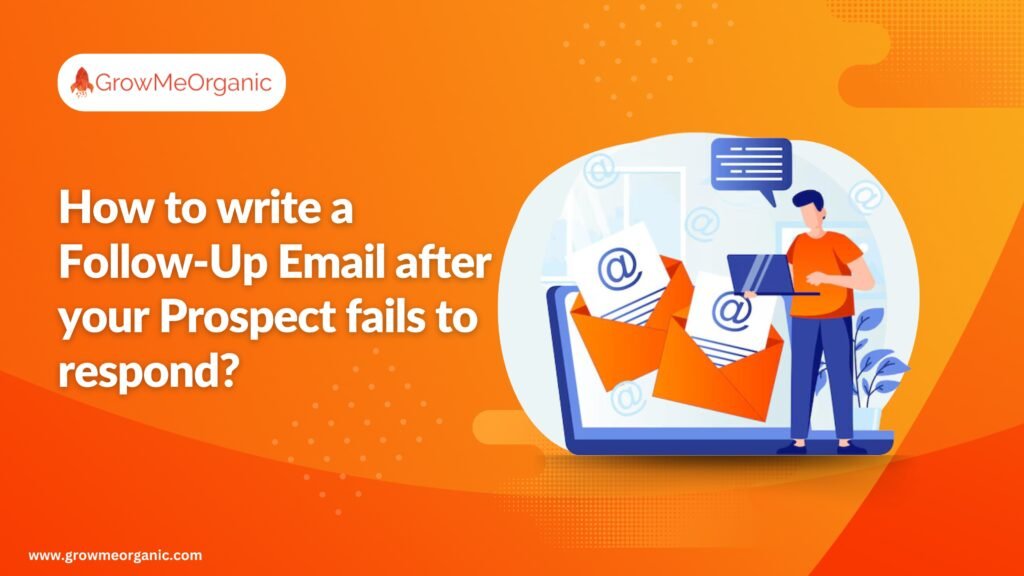
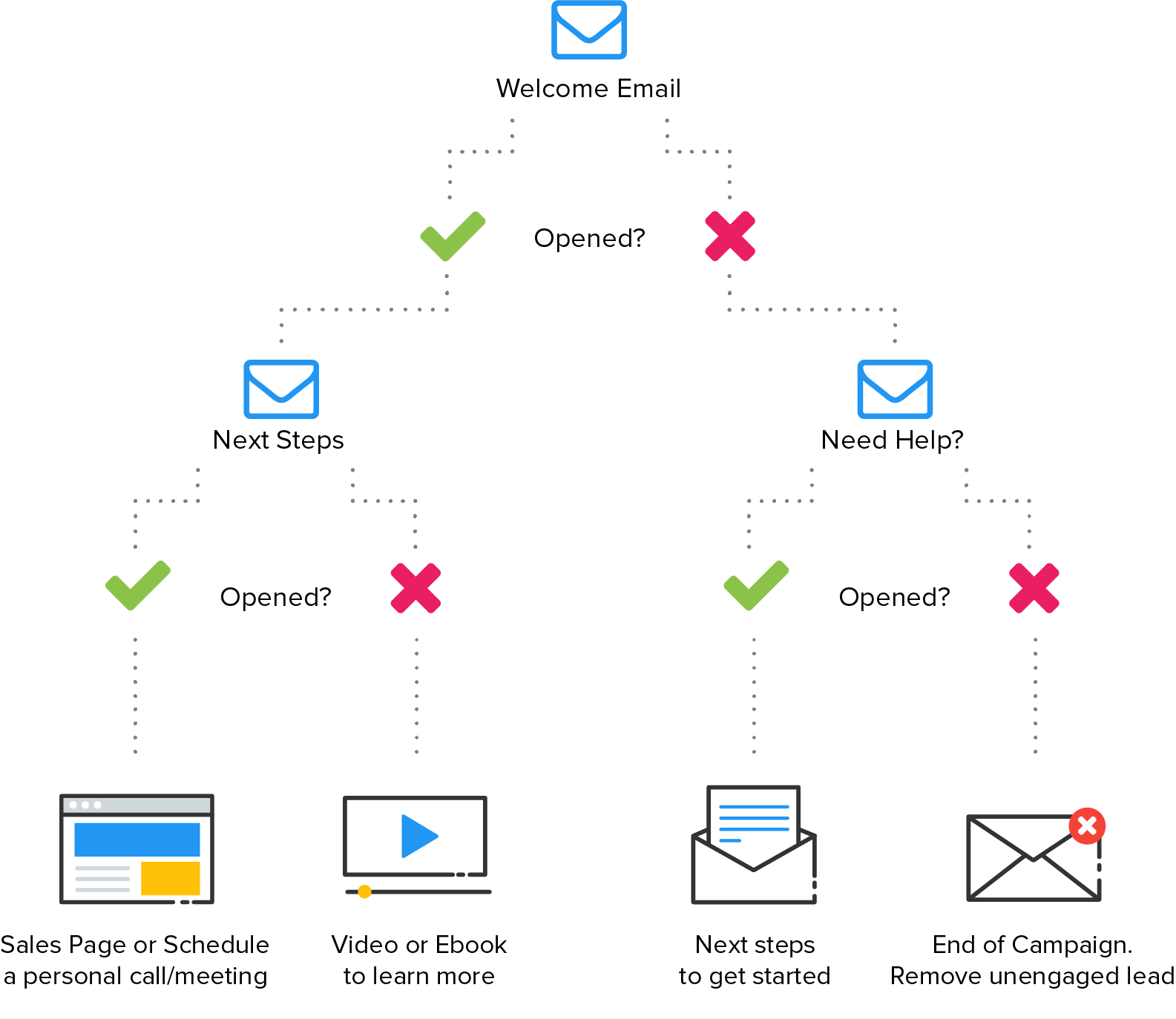
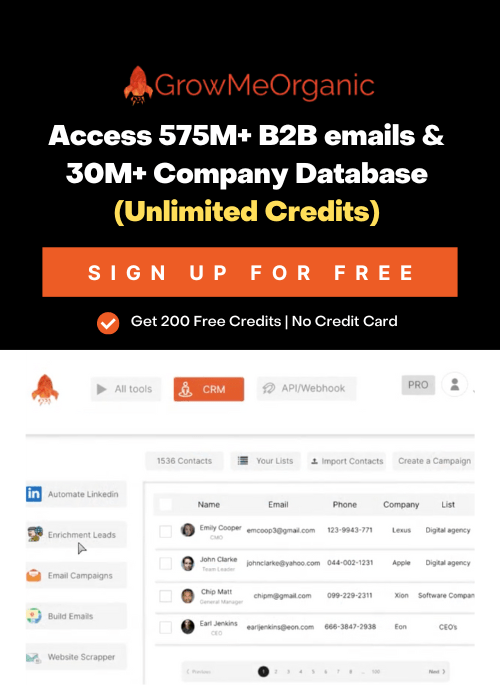




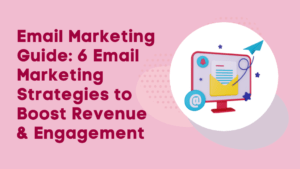
![8 Email Marketing Audit Steps You Must Know [2024 Ultimate Guide]](https://www.growmeorganic.com/wp-content/uploads/2024/07/GMO-covers-updated-49-300x169.png)